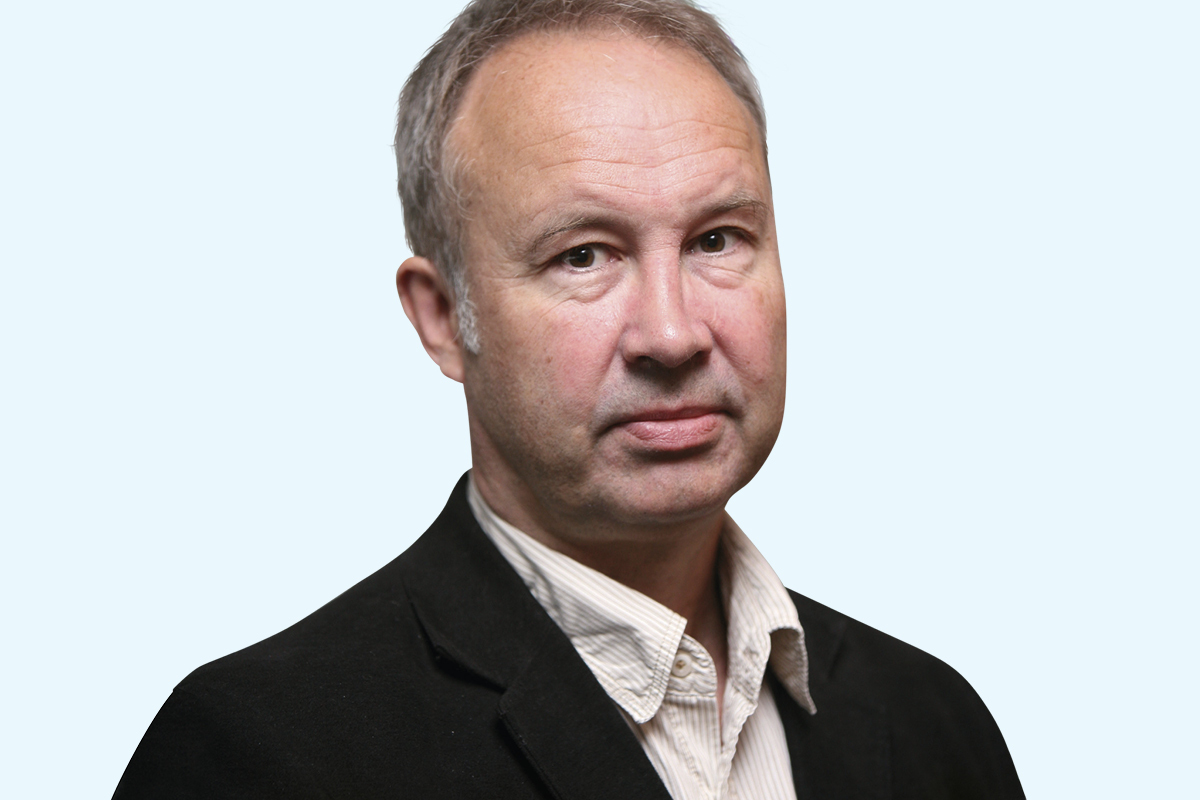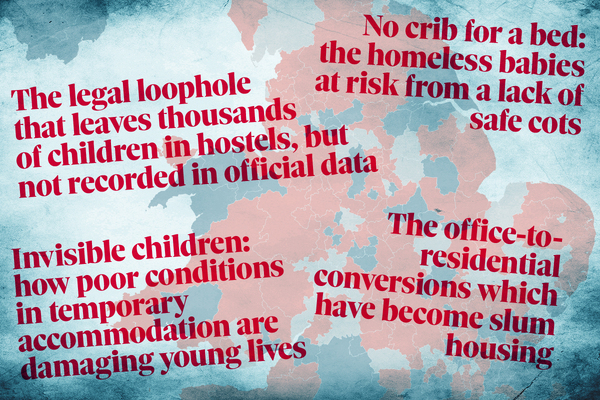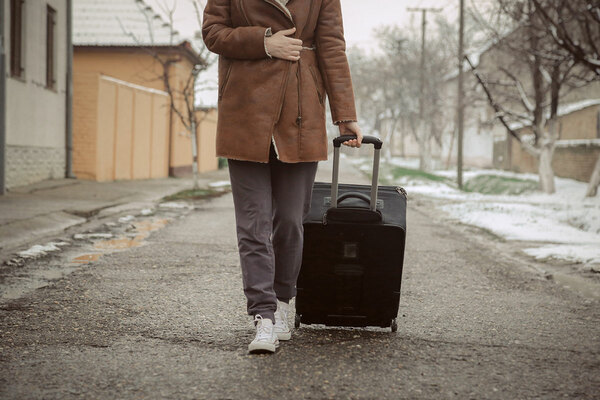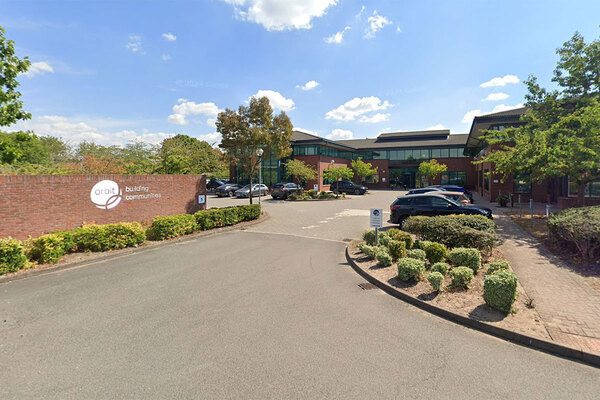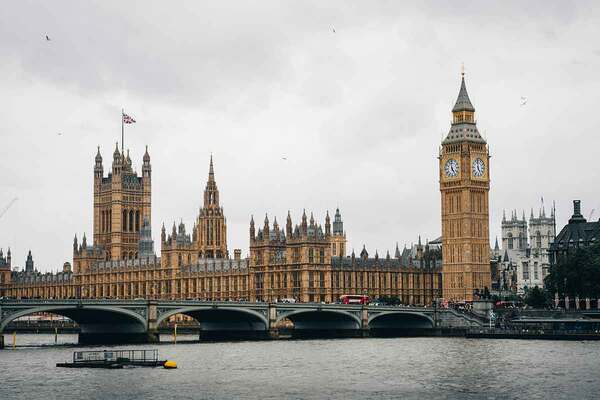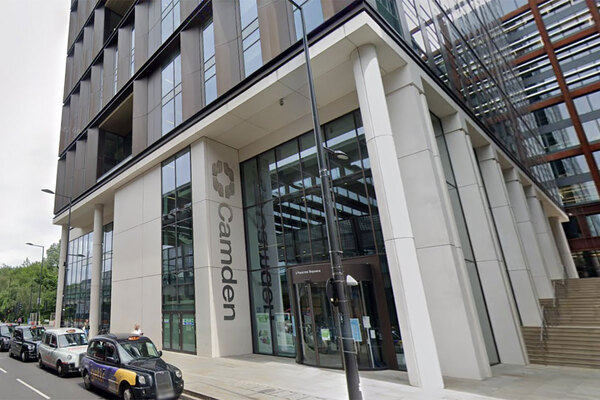You are viewing 1 of your 1 free articles
The latest stats give a full reckoning of the Conservatives’ homelessness record
The latest homelessness statistics show what happened to the numbers of families in temporary accommodation from 2010 to the last days of the Conservatives’ period in power. Inside Housing columnist Jules Birch considers what it can tell us about their record on this issue, the huge human cost of children living in B&Bs, and what the new Labour government should do next
Another quarter, another new record in the number of homeless people and children living in temporary accommodation.
Take any measure you like and the homelessness statistics published today (Thursday 28 November) are beyond grim. There are now 123,100 households in temporary accommodation in England, including 78,420 families with 159,380 children.
All of these numbers are moving in the wrong direction – up around 5% in the past three months and 15% on a year ago. All of them are the highest ever recorded in statistics that go back 20 years or more.
Within those numbers, there are 5,910 homeless families with children living in B&Bs and – most shameful of all – 3,770 of them have been there beyond the six-week legal limit. When local authorities are starting to shrug their shoulders as they break the law, pointing out plausibly that they have no other option, it must be a time for this government to act.
As these latest statistics cover the three months April to June 2024, they also throw the record of the last government into stark relief. For the first time it’s possible to set out the full record of Conservative-led governments on these forms of homelessness over the past 14 years.
When the coalition took power in 2010, all of the indicators had been falling since a crisis in the mid-2000s prompted urgent action by the then Labour government. The increases since lay bare the impact of 14 years of austerity and benefit cuts, as well as the failure to build enough homes in general, and social homes in particular.
When the coalition took power in May 2010, there were 50,400 households in temporary accommodation. That number is up 144%. There were 72,590 children in temporary accommodation, a number that felt shamefully high at the time, but has risen 120% in the 14 years since.
“Increases like those are a complete indictment of the Conservatives’ record in generating human misery at huge cost to local authorities”
But even these increases are tiny by comparison with the numbers in the most temporary (and usually most expensive) forms of temporary accommodation. The number of families with children in nightly paid, privately managed self-contained accommodation has risen more than tenfold from 2,220 in 2010 to 25,350 in 2024.
The number of families with children in B&Bs had fallen to just 740 in May 2010, but has risen 700% in the past 14 years. Just 160 of those had been in B&Bs beyond the six-week legal limit in 2010, so the current total of 3,770 represents a 2,200% increase.
Increases like those are a complete indictment of the Conservatives’ record in generating human misery at huge cost to local authorities. But they also demand emergency intervention from the new Labour government.
Extra funding for homelessness in the Budget was welcome as is the establishment of a cross-government inter-ministerial group on homelessness and rough sleeping chaired by deputy prime minister and housing secretary Angela Rayner.
However, the Budget also confirmed a renewed freeze in Local Housing Allowance (LHA), and the subsidy that local authorities get to pay for private temporary accommodation remains pegged at LHA levels from 2011. The inter-ministerial group will have its work cut out.
Back in the early 2000s, big increases in B&B numbers prompted the last Labour administration to establish a specialist unit and make a commitment that by March 2004, no family with children should be placed in a B&B except in an emergency and even then, for no more than six weeks. The numbers were cut from 3,000 to under 100 within 18 months.
“Some councils are sending close to 3,000 households out of their home area and the effects are rippling out across the country”
Now 20 years on, that six-week limit is being routinely breached by local authorities and temporary accommodation is all too often semi-permanent. So is the export of homeless families away from their home area to temporary accommodation that can be miles or even hundreds of miles away from family, friends, work and school.
When a council can contemplate buying new homes in bulk in another district, this is also being hard-wired into the housing system. There were 5,630 households in temporary accommodation in another local district in 2010, but that number was almost seven times higher at 38,940 in 2024.
At a recent hearing of the Housing, Communities and Local Government Committee, MPs heard evidence that some councils are sending close to 3,000 households out of their home area and the effects are rippling out across the country.
As Emma Haddad, chief executive of St Mungo’s, told the committee: “We are in danger of seeing here a whole generation of children who are being brought up without a stable home, going to the same school the whole time and living healthily. And guess what? We will see it come out in adulthood; we absolutely will.”
Sign up for our homelessness bulletin
Already have an account? Click here to manage your newsletters

